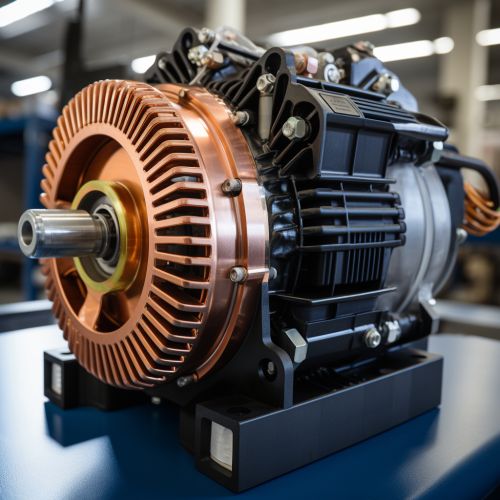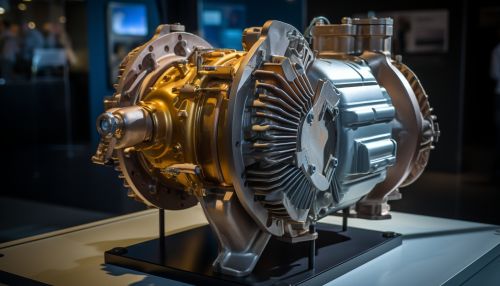Alternating Current
Introduction
Alternating current (AC) is a type of electrical current in which the direction of the flow of electric charge periodically reverses. This contrasts with direct current (DC), where the flow of electric charge is only in one direction. AC is the form of electric power that is delivered to businesses and residences. The usual waveform of an AC power circuit is a sine wave, as this results in the most efficient transmission of energy.
History
The first practical use of AC was in the 1880s by the American inventor and industrialist George Westinghouse, who purchased the patents for the transformer from Lucien Gaulard and John Dixon Gibbs and for the AC motor from Nikola Tesla. This allowed him to build a complete AC system that could provide power to consumers at a safe voltage, while still allowing for efficient transmission over long distances.
Principles
AC can be produced using a device called an alternator. This device is a type of electrical generator designed to produce alternating current. A basic alternator consists of a rotating magnetic field called a rotor and a stationary coil of wire called a stator. When the rotor spins, it creates a changing magnetic field, which induces a voltage in the stator. This voltage is the alternating current.
AC Power
AC power is defined as the rate at which energy is transferred by an electric circuit. The unit of power is the watt, which is equal to one joule per second. In an AC circuit, power can be calculated using the formula P = VI cos θ, where V is the voltage, I is the current, and θ is the phase angle between the voltage and current waveforms.
AC Transmission
AC transmission is the transmission of electric power by alternating current. AC transmission systems can use higher voltages than DC systems, which reduces the energy lost as heat during transmission. The power that is lost in a conductor is proportional to the square of the current, so by transmitting power at a higher voltage (and therefore a lower current), the power loss can be reduced.
AC and DC Comparison
While DC is more stable and consistent, AC is more efficient to transmit over long distances. DC systems require large and expensive converters to increase and decrease the voltage, while AC systems can use simple and cheap transformers. However, DC systems have no frequency-dependent losses or phase problems, and can use thinner conductors for the same power transmission.
AC in the Home
Most household appliances run on AC power, because it is safer and more efficient. The voltage of AC power can be easily changed, which means that high voltages can be used for transmission and then reduced for use in the home. This reduces the amount of current that needs to be carried, which in turn reduces the size of the conductors needed and the amount of heat generated.
Safety
AC power can be dangerous if not handled correctly. The alternating nature of the current can cause muscles to contract, which can lead to injury or death. Therefore, it is important to always use caution when working with AC power.
See Also


